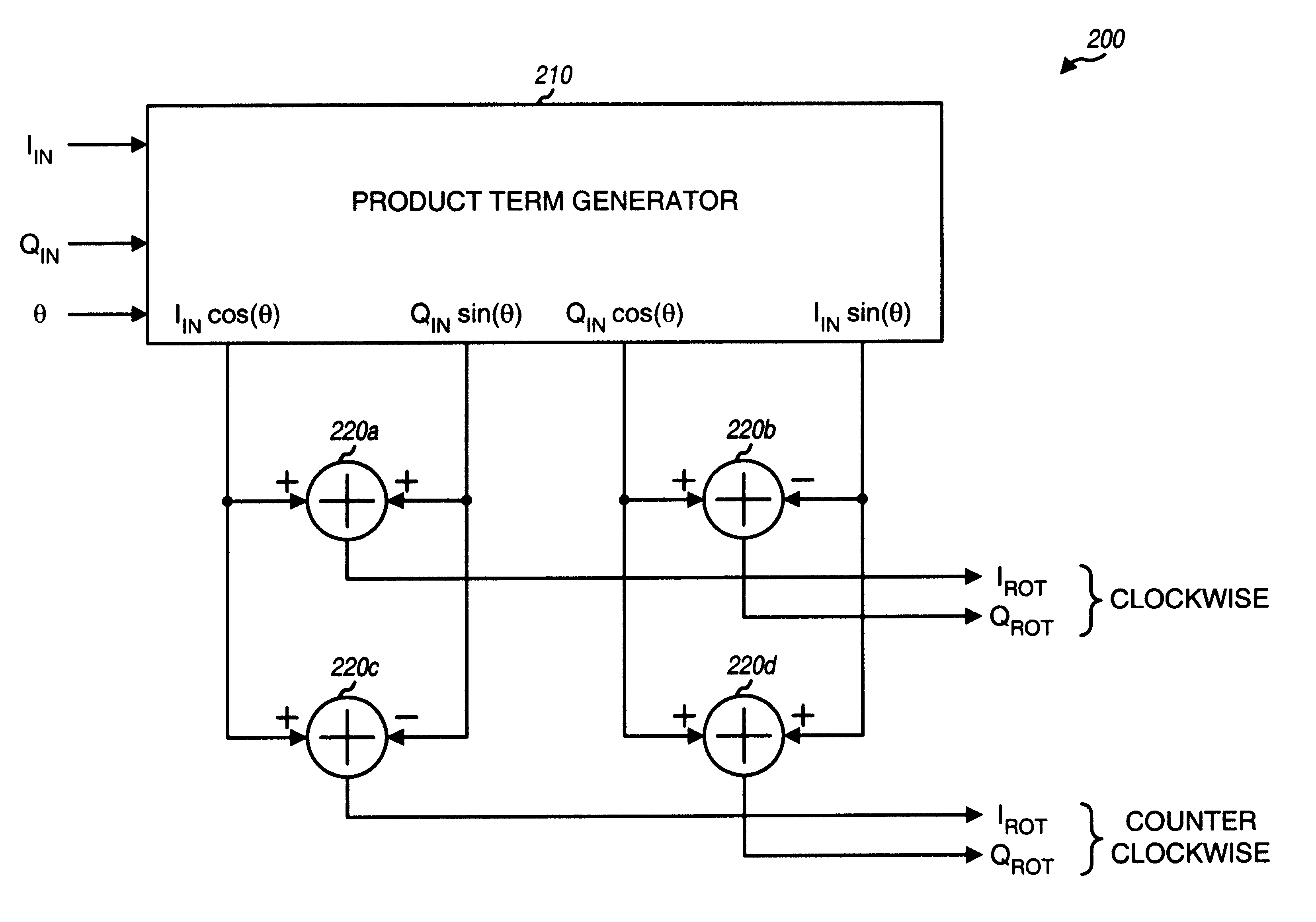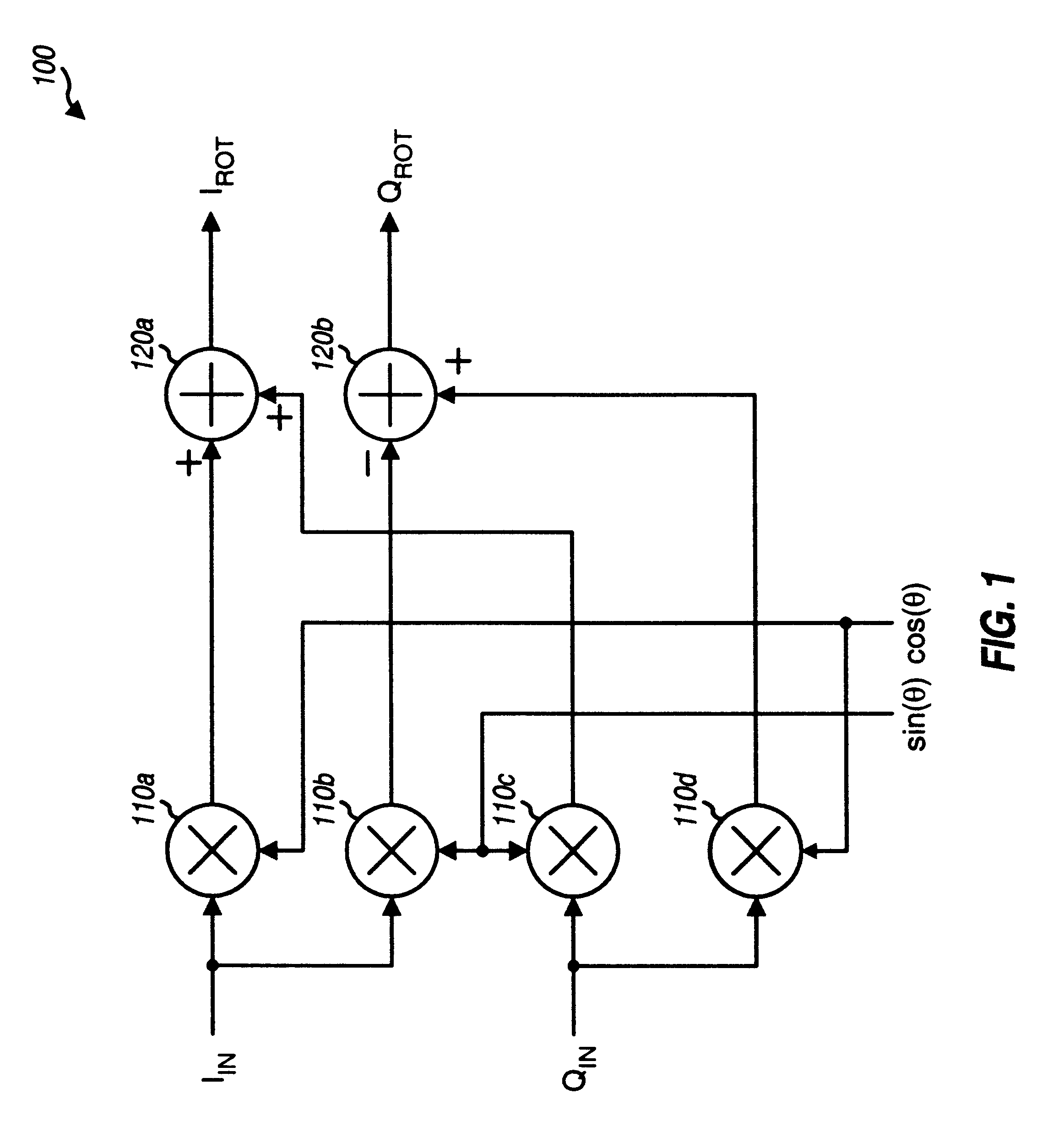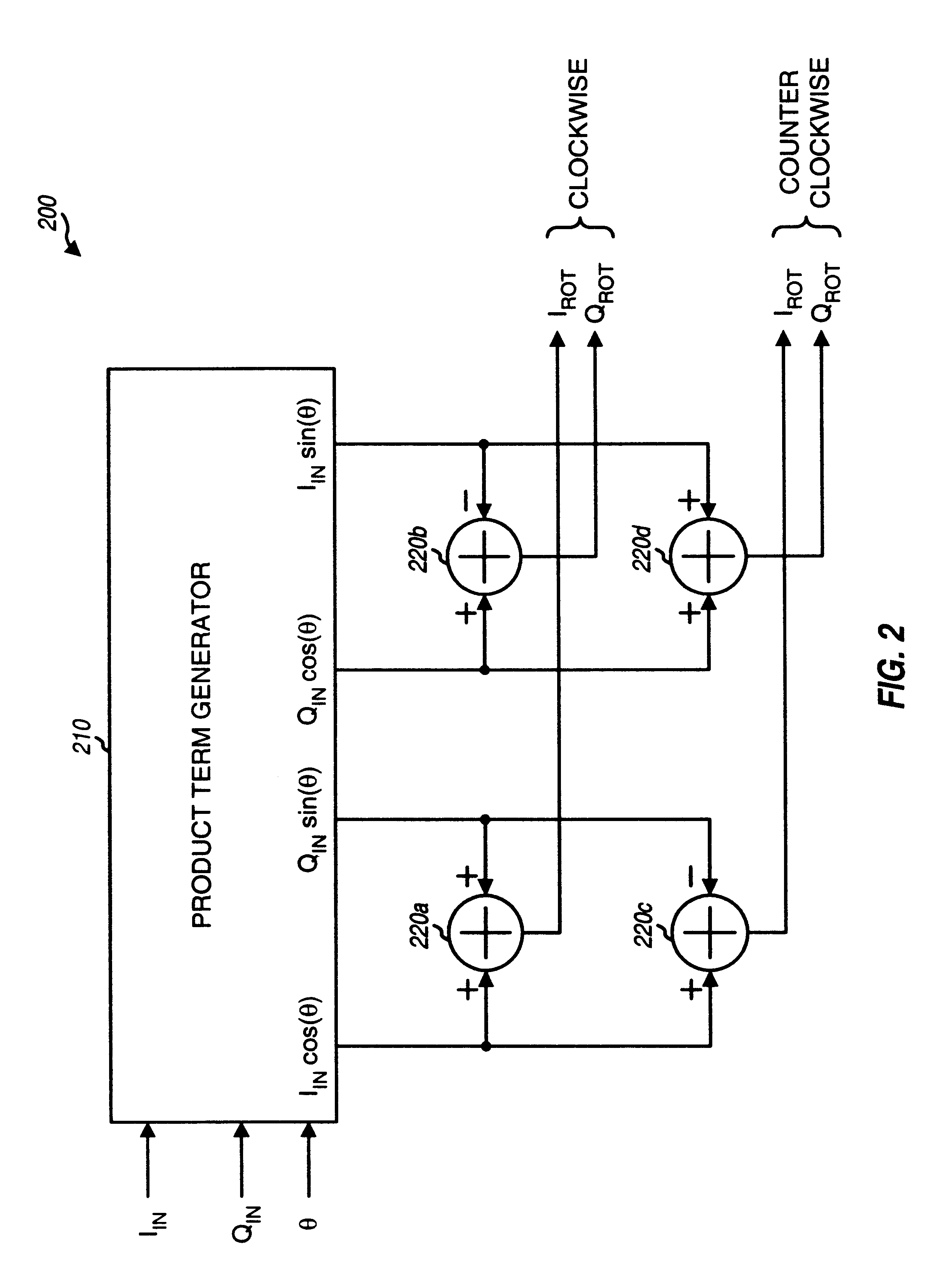Bi-directional vector rotator
a rotator and bi-directional technology, applied in the field of data transmission, can solve the problems of increasing the complexity and cost of the device, and needing a single complex carrier signal
- Summary
- Abstract
- Description
- Claims
- Application Information
AI Technical Summary
Problems solved by technology
Method used
Image
Examples
Embodiment Construction
FIG. 1 is a block diagram of a conventional vector rotator 100 that can be used to rotate the phase of the complex input samples in one direction. The complex input samples comprise the inphase (I.sub.IN) and quadrature (Q.sub.IN) samples, and each pair of I.sub.IN and Q.sub.IN samples can be viewed as a complex vector represented as I.sub.IN +jQ.sub.IN. Phase rotation in the clockwise direction by an angle .theta. is mathematically equivalent to multiplication of the complex vector by the term e.sup.-j.theta.. The phase rotated vector, I.sub.ROT.sup.cw +jQ.sub.ROT.sup.cw, for the clockwise rotation can be expressed as: ##EQU1##
where
I.sub.ROT.sup.cw =I.sub.IN cos .theta.+Q.sub.IN sin .theta.,
and
Q.sub.ROT.sup.cw =Q.sub.IN cos .theta.-I.sub.IN sin .theta.,
which is equivalent to
I.sub.ROT.sup.cw =I.sub.IN cos .theta.+Q.sub.IN cos(90-.theta.),
and
Q.sub.ROT.sup.cw =Q.sub.IN cos .theta.-I.sub.IN cos(90-.theta.). Eq (2)
Similarly, phase rotation in the counter clockwise direction by an angle ...
PUM
 Login to View More
Login to View More Abstract
Description
Claims
Application Information
 Login to View More
Login to View More - R&D
- Intellectual Property
- Life Sciences
- Materials
- Tech Scout
- Unparalleled Data Quality
- Higher Quality Content
- 60% Fewer Hallucinations
Browse by: Latest US Patents, China's latest patents, Technical Efficacy Thesaurus, Application Domain, Technology Topic, Popular Technical Reports.
© 2025 PatSnap. All rights reserved.Legal|Privacy policy|Modern Slavery Act Transparency Statement|Sitemap|About US| Contact US: help@patsnap.com



